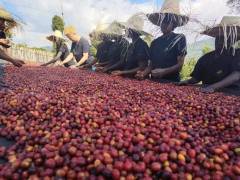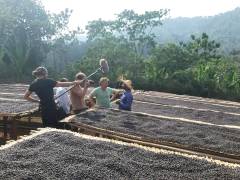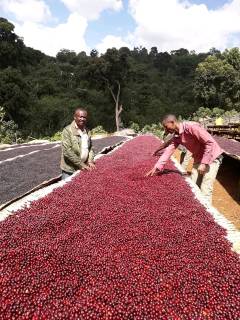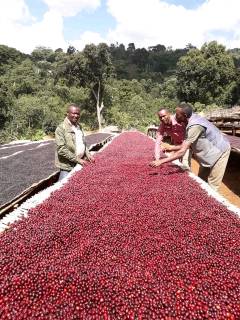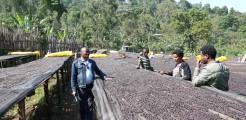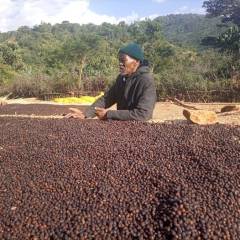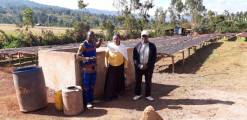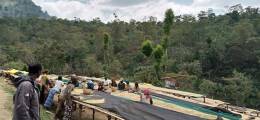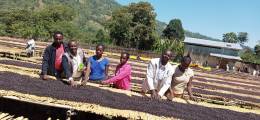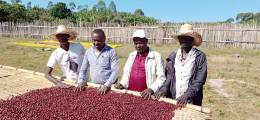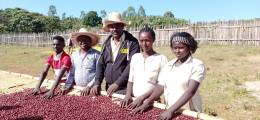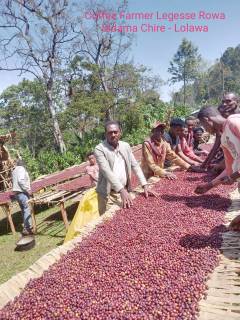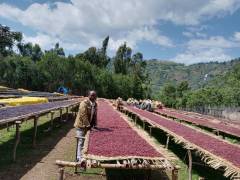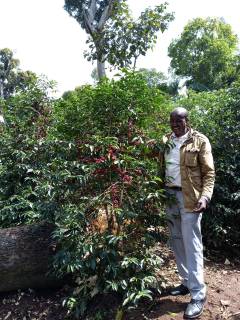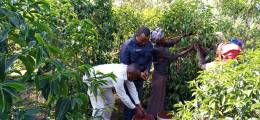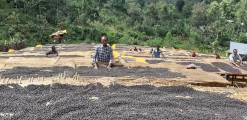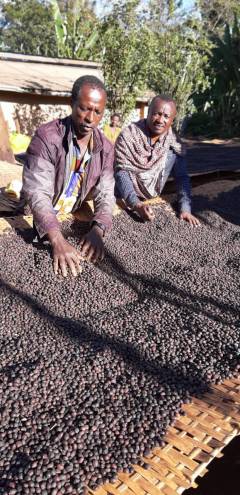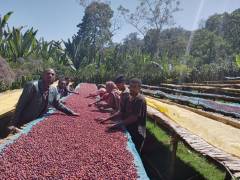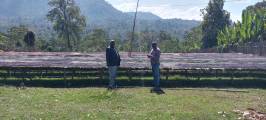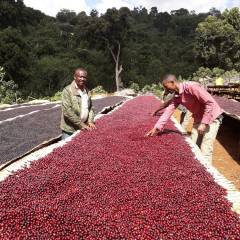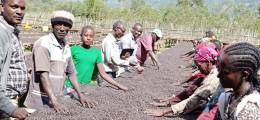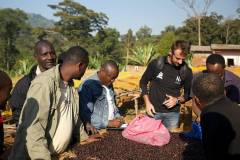Kurume Variety
Ethiopian coffee varieties are often described as “heirloom” as a nod of respect to their long history and to differentiate the production context in Ethiopia from that of other coffee origins that self-identify as “technified.” While there are many mountain forests in Ethiopia filled with wild coffee, most of the coffee grown and harvested for export today is some form of selected or bred variety. Ally Coffee sources from Yirgacheffe, Guji, and the broader Sidamo region. What follows are descriptions of the most common varieties in the washing station community lots, Core Coffee regional lots, and single producer lots we source: Kurume, Dega, Wolisho, and two locally selected sub varieties from Guji. The Kurume is a well-known Ethiopian variety. In Guji, the Kurume variety goes by the name of the Kudhum variety. But in Yirgacheffe farmers call this the Kurume variety. Kurume – an indigenous Ethiopian varietal, smaller in size than other typical/heirloom beans but very sweet in the cup, also extremely aromatic, and also other Ethiopian typical/heirloom varietals.
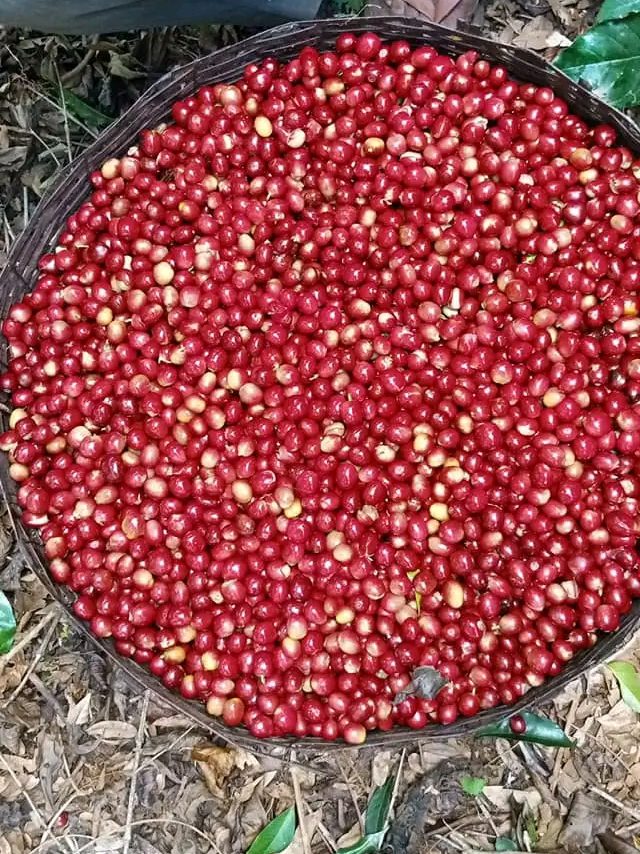
Kurume is one of Ethiopia’s regional landrace varieties from Yirgacheffe. Surveys carried out between 1989 and 1994 help identify local landraces by name. Prior to the 1970’s there was essentially no intentional breeding or variety selection at a national level in Ethiopia; individual farmers selected seeds locally to reproduce their crop. But a devastating epidemic of coffee berry disease in the 1960’s led researchers to establish the Jimma Agricultural Research Center (JARC) and begin cataloging coffee trees that demonstrated resistance to both coffee berry disease and drought as well as producing high yields.
These selections were approached as a national crop improvement program, but in the fields the newly selected and resistant varieties did not perform optimally in climates different from that of Jimma, where the plants had been bred. Researchers at JARC pivoted, cataloging and selecting local landrace varieties that were both naturally suited to the environments where they already grew and representative of the cup flavor profiles of Ethiopia’s many coffee growing regions.
Kurume is one of the regional landraces identified in the Yirgacheffe area. As with many regional landraces, the names applied to the coffee varieties are borrowed from the names of indigenous trees. The Kurume tree bears small fruit with a good annual yield, similar to Kurume coffee’s small cherries and bountiful harvest. Kurume is a commonly grown variety among farmers in the Guji and Gedeo Zones, which includes Yirgacheffe. Sometimes, the Kurume name is applied to JARC-selected varieties due to the similarities in the trees’ appearance.
Dega is another regional landrace named for an indigenous tree. The wood of the Dega tree omits a sweet, fragrant aroma when burned for firewood, similar to the smell of coffee roasting. The Amharic word “dega” means “cool highland area,” which is also applicable to the agroecological conditions where Dega coffee grows.
Wolisho is yet another regional landrace named for a tree indigenous to Gedeo and the surrounding area. This tree bears large fruit with inconsistent yearly yields. Wolisho coffee has large cherries and long leaves.
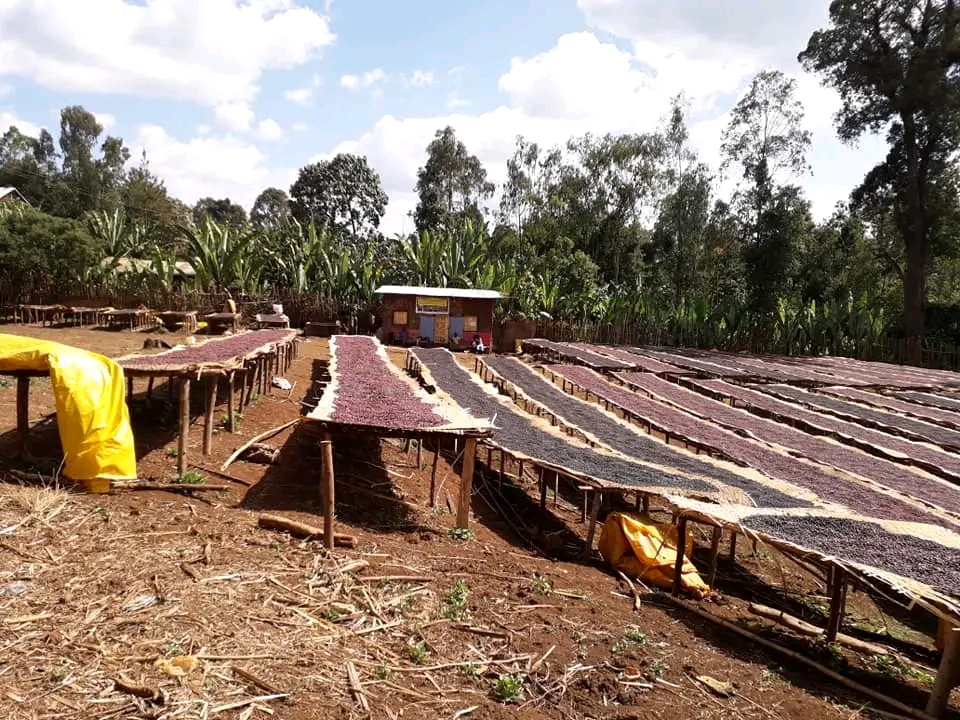
Heirloom locally selected sub varieties 74110 and 74112 were developed in the 1970’s at the Jimma Agricultural Research Center (JARC) for resistance to the coffee berry disease. These two varieties begin with “74” to indicate their cataloging and selection in 1974.
Variety 74110 was selected from an original “mother tree” in the Bishari village, Metu Province, Illuababora zone, Oromia region. After researching its resistance to coffee berry disease and overall yield, JARC released the variety in 1979. 74110 trees are short and compact, with small leaves, cherries, and beans.
Variety 74112 also originates in the Metu-Bishari forest and was similarly released in 1979 for its disease resistance and yield potential. Its trees, too, are small and compact. Both varieties grow well in climates similar to those where the original mother trees grew.
===
Source: A Reference Guide to Ethiopian Coffee Varieties by Getu Bekele and Timothy Hill. G Broad Trading PLC, Addis Ababa, Ethiopia; Counter Culture Coffee, Durham, NC, USA, 2018.
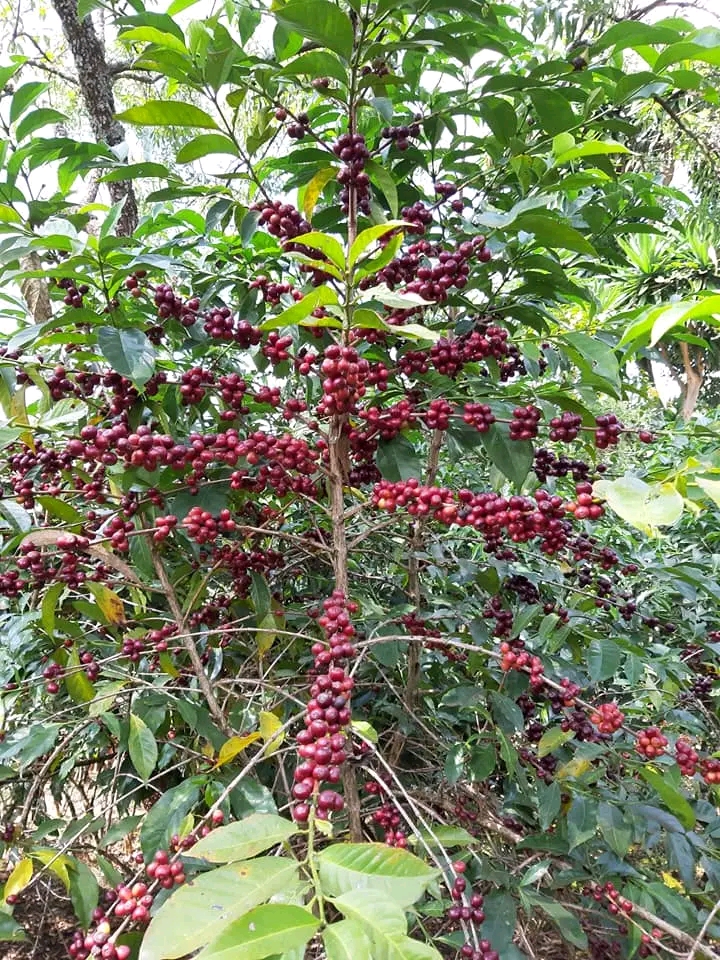
Product description & Offerings
The output of this system was specialty grades, mostly natural (unwashed). But right now we are started exporting conventional grades by the name of ‘KURUME BEAN’.
This coffee are growing on middle highlands of Yirgacheffe , kochore , Gedeb and Sidamo region( Bensa, chire and Aroresa) which found on 1800m-2250m above sea level. At this elevation the “king coffees” of Yirgacheffee and Sidamo brand having:
- floral ,fruity aroma;
- sweet, delicate, rich, balanced, spicy, fruity flavor;
- clean, sweet , resonant after taste;
- piquant ,vibrant, winey acidity ;
- Buttery & smooth mouth feel, are produced.
- The coffee world is witnessed to Yirgacheffee brand for being “king coffee” in the world
























